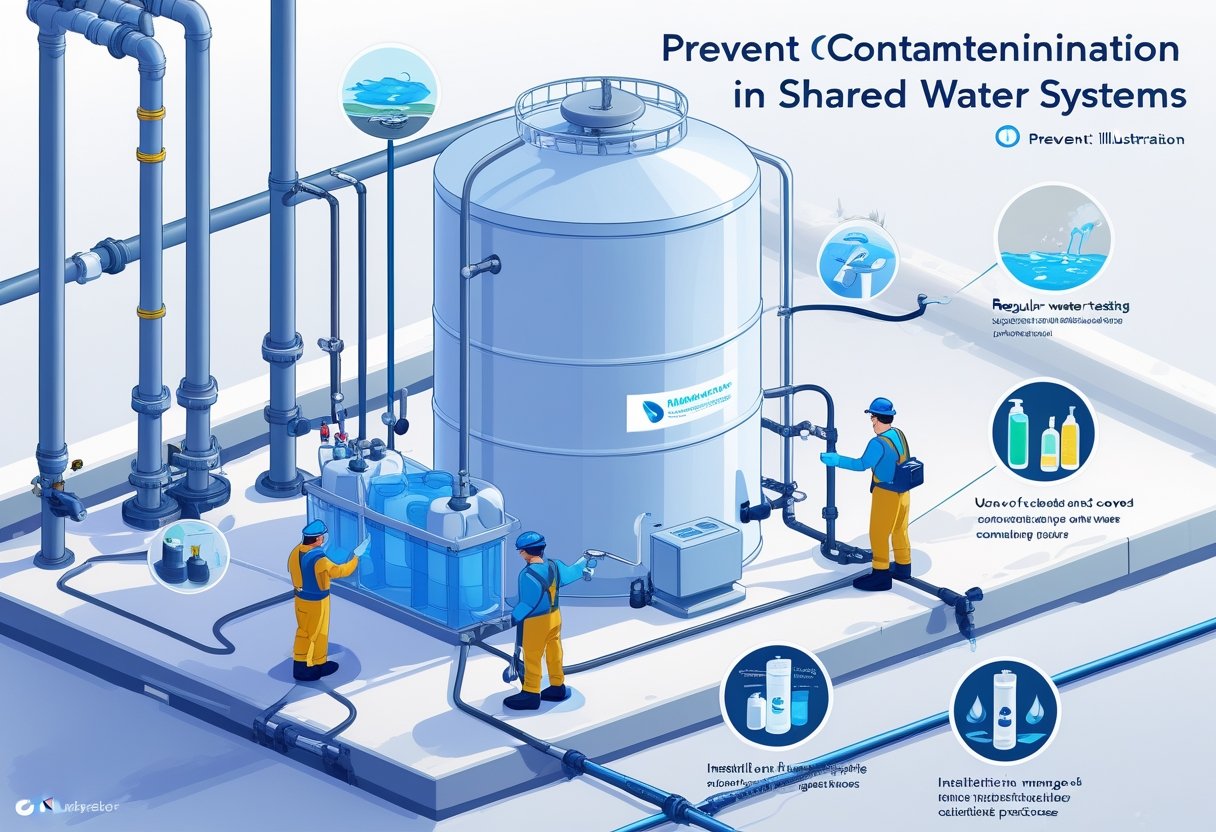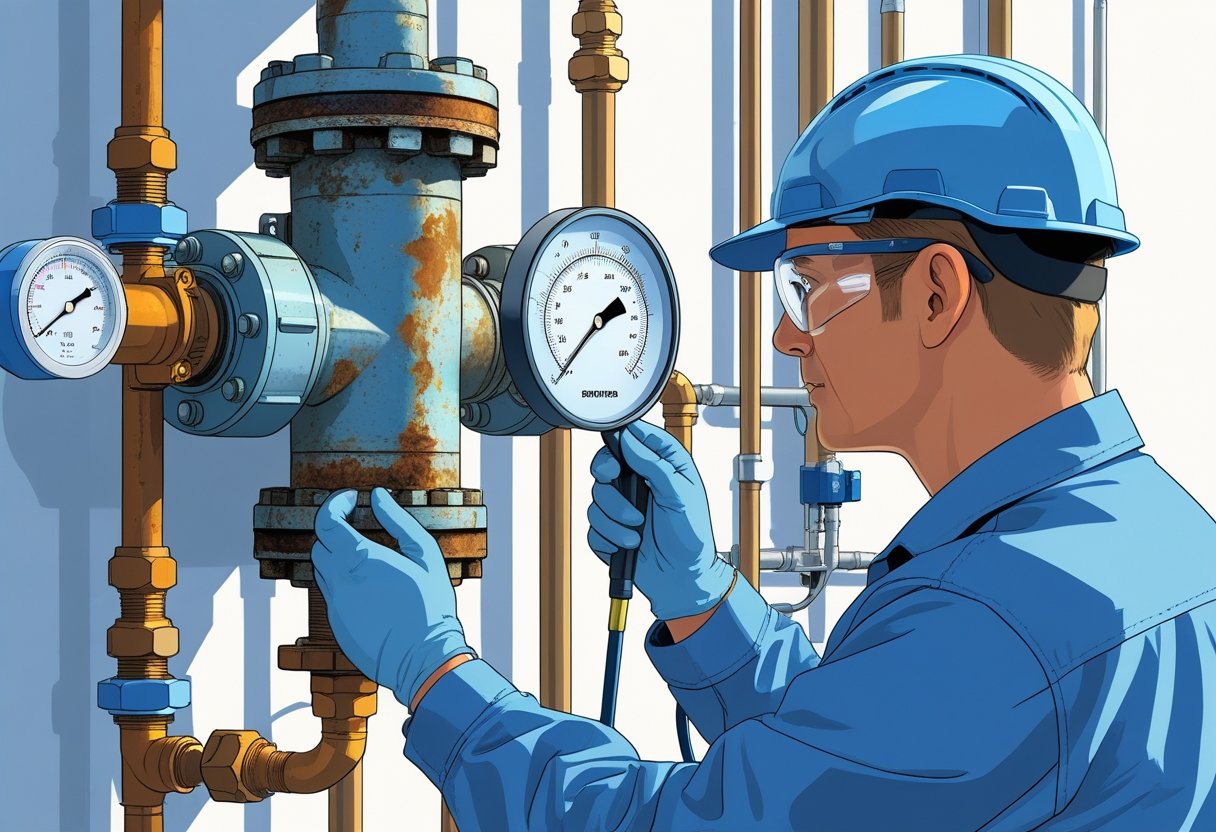Ensuring the safety of your water supply is crucial, and a backflow test is an essential step in that process. A backflow test is performed by connecting a specialized testing device to your backflow preventer to check its functionality and compliance with local regulations. Regular testing protects your home and community from potentially harmful contaminants.
When you schedule a backflow test with Pacific Backflow, you can expect a thorough inspection from certified technicians. They will efficiently assess your system to ensure it operates correctly, alleviating concerns about water quality. After the test, all necessary reports are filed with the city water authority, simplifying the compliance process for you.
Understanding how backflow testing works not only keeps your property secure but also contributes to the integrity of the entire water system. Trust Pacific Backflow to provide the reliable service you need to maintain a safe water supply, reflecting our commitment to caring for our community.
Understanding Backflow and Its Prevention
Backflow poses a serious risk to the safety of potable water systems. Understanding the concept, along with effective prevention methods, is crucial for protecting water supply integrity and public health. Here are key points regarding backflow and its prevention assemblies.
The Concept of Backflow
Backflow occurs when water flows in the reverse direction within a plumbing system. This situation can lead to contamination as non-potable water can merge with clean drinking water. A common cause of backflow is a cross connection, which connects potable water systems to potentially harmful sources like irrigation systems or industrial processes.
Backflow prevention assemblies are designed to avert this issue. They employ mechanical valves to ensure that water flows only in the designated direction. Regular backflow testing is essential to verify that these devices are functioning effectively, a service offered by companies like Pacific Backflow, which serves all of San Diego County.
Types of Backflow Prevention Assemblies
Various backflow prevention assemblies are available, each suited for different conditions. The double check valve assembly is a popular choice for low to moderate hazard applications. It contains two independent check valves, allowing for effective contamination prevention.
Another type is the reduced pressure zone (RPZ) assembly, typically installed in high-risk areas. This assembly maintains a pressure difference between the supply and the area at risk, preventing backflow even during significant pressure changes. Understanding the right assembly for your needs is crucial, and professionals like Pacific Backflow can guide you through the selection and installation process.
Components of a Backflow Prevention System
Backflow prevention systems consist of various components designed to protect your water supply from contamination. Understanding these components helps you ensure compliance with local regulations and maintain water quality.
Pressure Vacuum Breaker (PVB) Overview
A Pressure Vacuum Breaker (PVB) is an essential component of many backflow prevention assemblies. It consists of a valve and an air inlet, which work together to prevent backflow caused by negative pressure in the water system.
When the water supply is interrupted, the PVB opens, allowing air into the system. This prevents water contamination by stopping any potential backflow of pollutants. PVBs are commonly used for irrigation systems and are effective in moderate hazard situations. Regular testing is crucial to ensure functionality.
If you're seeking reliable backflow testing, consider contacting Pacific Backflow. Their certified technicians offer thorough assessments to keep your PVB in optimal condition.
Double Check Valve Assembly Details
A Double Check Valve Assembly (DCVA) is another critical component in backflow prevention. It features two check valves arranged in a series, providing an additional layer of protection against contamination.
The design includes a test cock for routine inspections. When water flows in the correct direction, the first valve opens while the second remains closed, ensuring backflow is hindered. In situations where there is potential for back pressure or back siphonage, a DCVA is highly effective.
These assemblies are typically used in low to moderate hazard environments, such as commercial settings. Regular maintenance is key to ensuring that your DCVA functions as intended, thus safeguarding your water supply.
Conducting a Backflow Test
Conducting a backflow test involves careful preparation and a systematic procedure to ensure your backflow prevention assembly operates effectively. This process is crucial for protecting your water supply from contaminants.
Preparation for Backflow Testing
Before performing a backflow test, ensure that all necessary equipment is available. Key tools include a calibrated test kit and a shut-off valve to stop the water supply.
You must also schedule the test during a time when water use is minimal to avoid disruptions. Make sure to inform relevant parties about the testing.
Inspect the backflow prevention assembly for visible damage or wear. A thorough pre-test inspection can save time and ensure compliance with requirements. Always choose certified professionals for testing, like those at Pacific Backflow, to guarantee accurate results and adhere to local regulations.
Step-by-Step Backflow Testing Procedure
The backflow testing begins with shutting off the water supply to the system. Next, connect the test kit hoses to the assembly's test cocks.
Follow the specific testing procedures outlined for your type of backflow assembly, as methods may vary. For example, record readings for each test and compare these against acceptable standards.
Once testing is complete, disconnect the hoses and restore the water supply. Document the test results and submit them, ensuring compliance with annual testing requirements. If issues arise, consider immediate repairs or replacements, which Pacific Backflow can assist with to maintain the integrity of your water system.
Troubleshooting Common Backflow Issues
Addressing issues with backflow devices is crucial for maintaining a functional irrigation and plumbing system. Two primary areas to focus on are water pressure fluctuations and the ongoing maintenance of your backflow prevention devices.
Dealing with Water Pressure Fluctuations
Water pressure fluctuations can significantly impact the performance of your backflow device. If you notice pressure drops or surges, check your plumbing system for leaks, blockages, or malfunctioning components.
Common causes include:
- Blockages: Debris in pipes can restrict flow.
- Leaks: Inspect joints and connections for undetected leaks.
To troubleshoot, monitor pressure readings with a gauge and ensure your system maintains a consistent supply. Regular testing is essential to ensure compliance and efficiency, which you can manage through professional services like those offered by Pacific Backflow. They can assess your system and recommend necessary repairs or adjustments.
Maintenance of Backflow Prevention Devices
Regular maintenance is vital for the longevity and efficacy of backflow prevention devices. Begin with visual inspections for any visible debris, corrosion, or wear. It's important to clear any obstructions and realign components as needed.
Perform annual testing to confirm the proper functioning of the device. Pacific Backflow provides reliable testing services to ensure your backflow preventers meet local regulations. Also, consider installing protective measures to secure your device against theft or tampering. Proper maintenance not only prolongs the lifespan of your device but also safeguards your water supply from contamination.
Legal and Safety Considerations
Understanding the legal and safety aspects of backflow testing is essential for ensuring compliance and protecting your drinking water supply. Regulations exist to prevent contamination through cross connections, emphasizing the importance of annual testing.
Regulations Governing Backflow Testing
Local and state regulations mandate that backflow prevention devices be tested regularly to maintain their functionality. These laws are designed to safeguard public health by ensuring your drinking water supply remains uncontaminated.
Certified technicians are required to perform these tests using approved methodologies and equipment. Compliance with these regulations is crucial, as failure to adhere could result in hefty fines or legal repercussions.
Documentation from tests is often necessary for compliance checks. Companies like Pacific Backflow ensure that your reports are filed with the local water authority, keeping you in good standing and minimizing risks associated with non-compliance.
Why Annual Testing is Crucial for Safety
Annual backflow testing is vital for detecting potential malfunctions that could allow contaminants into your water supply. These tests identify any weaknesses in your system, ensuring that cross connection control measures are effective.
Regular testing helps prevent serious health implications from water contamination incidents. Neglecting this critical maintenance could lead to unsafe drinking water, delays in repairs, or expensive cleanup efforts.
By scheduling annual evaluations with a trusted service like Pacific Backflow, you help protect your community’s water safety and comply with all regulatory mandates. This proactive approach secures your property and enhances overall public health.
Frequently Asked Questions
Backflow prevention testing is essential for maintaining safe drinking water. Understanding its procedures, how often tests should be conducted, and the potential outcomes can help you comply with local regulations and protect your water supply.
Why is backflow prevention testing a mandatory procedure?
Backflow prevention testing is mandatory to safeguard drinking water from contamination. Cross-connections can allow harmful substances to enter the water supply. Regular testing ensures that backflow preventers function properly, maintaining safe water standards.
What are the standard intervals for conducting backflow prevention tests?
Typically, backflow prevention tests are conducted annually. This requirement is enforced by local regulations to ensure ongoing protection of the water supply. Consistent testing helps identify any potential failures before they can cause significant issues.
What steps are involved in carrying out a backflow preventer inspection?
Carrying out a backflow preventer inspection involves several steps. Technicians will initially evaluate the device's location and ensure access. Next, they may shut off the water supply, test the device using calibrated equipment, and analyze the results to determine functionality.
Can you elaborate on the typical duration of a backflow prevention device test?
The duration of a backflow prevention test usually ranges from 30 to 60 minutes. Factors influencing this time include the complexity of the system and any additional repairs required. Technicians aim for efficiency while ensuring thorough testing.
What are the implications of a failed backflow prevention device test?
A failed backflow test indicates that the device is not functioning correctly, posing a risk of water contamination. Immediate repairs or replacements are necessary to restore compliance with safety regulations and protect the water supply.
What tools and equipment are necessary for conducting a thorough backflow test?
Essential tools for conducting a backflow test include pressure gauges, testing kits, and specialized wrenches. These tools allow technicians to measure the pressure in various parts of the backflow preventer. Proper equipment ensures accurate testing and reliable results.











